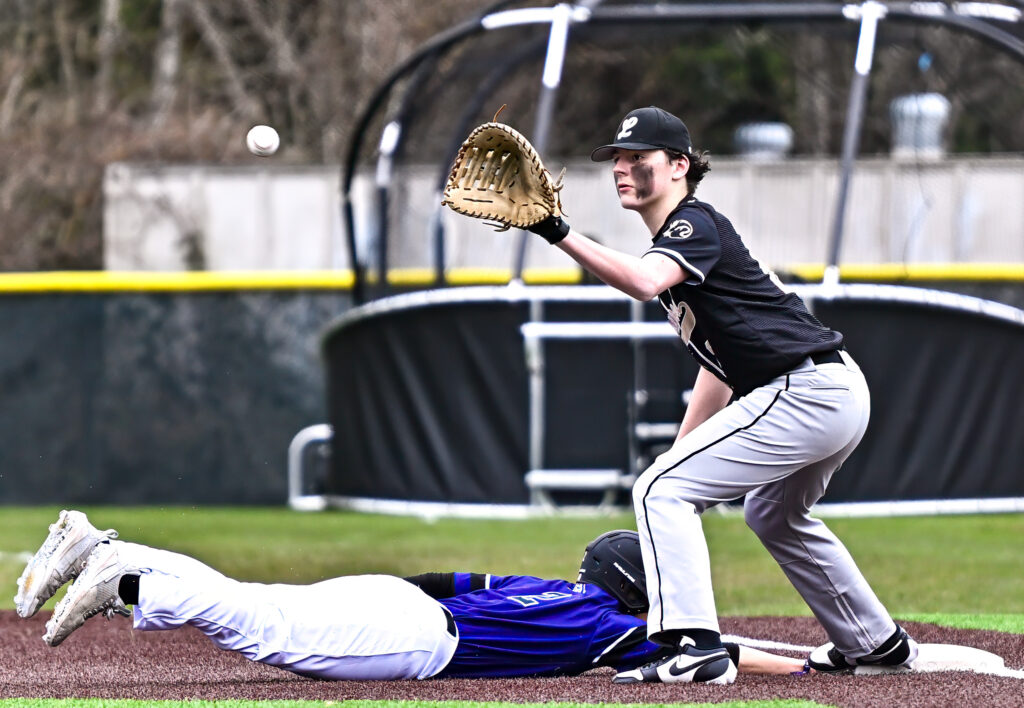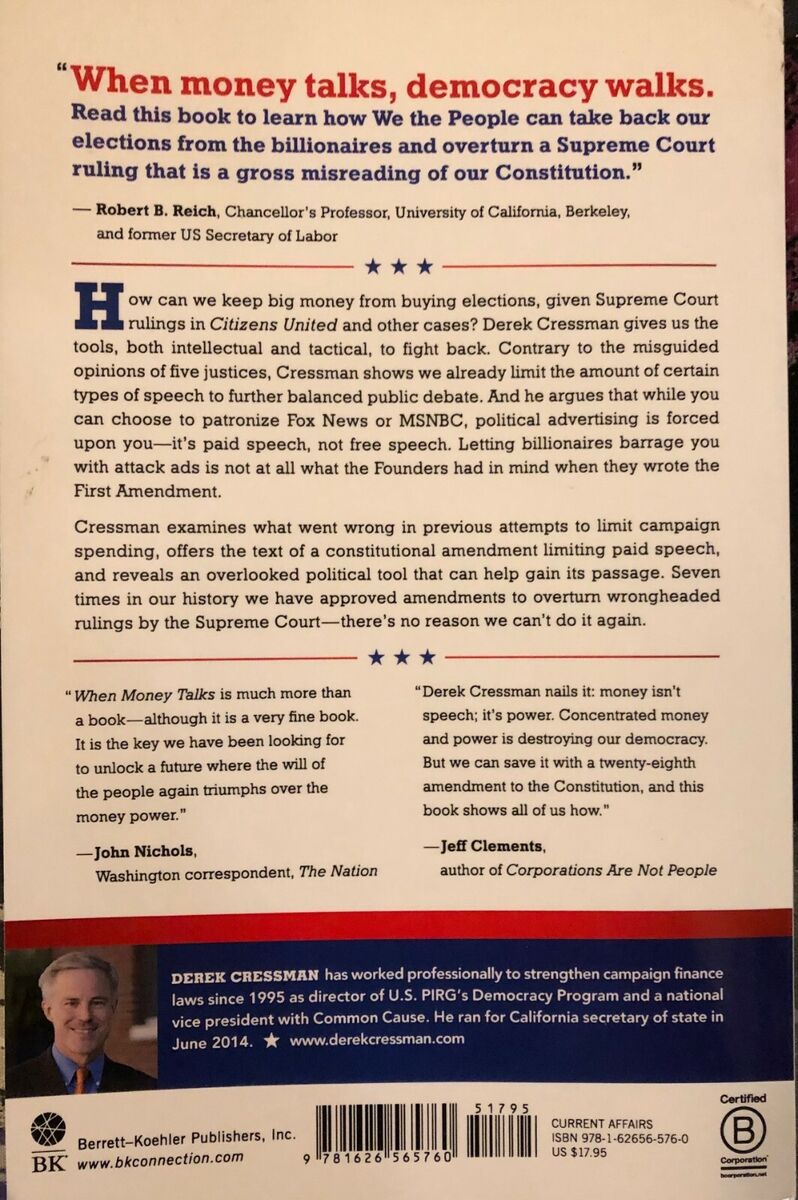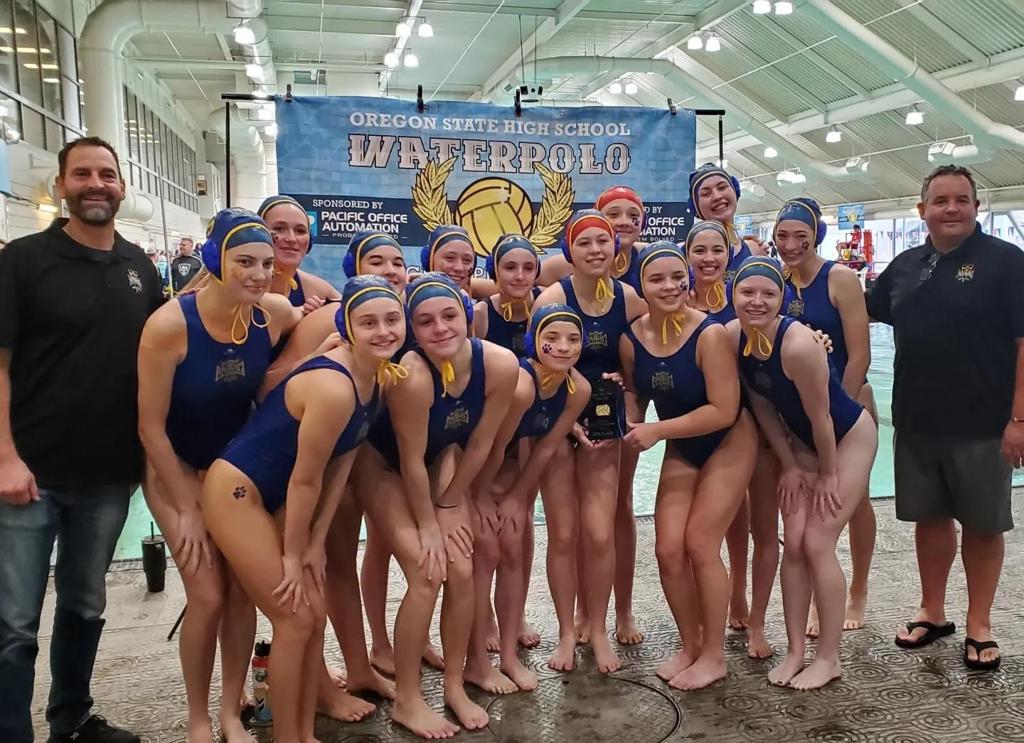NIL
Nico and Madden Iamaleava transfers raise issue of whether NIL collectives will recoup payments | News, Sports, Jobs
FILE – Tennessee quarterback Nico Iamaleava (8) warms up before an NCAA college football game against Alabama, Saturday, Oct. 21, 2023, in Tuscaloosa, Ala. (AP Photo/Vasha Hunt, File) (AP) — The surprise transfers of brothers Nico and Madden Iamaleava have prompted fresh questions about contracts and name, image and likeness buyouts […]
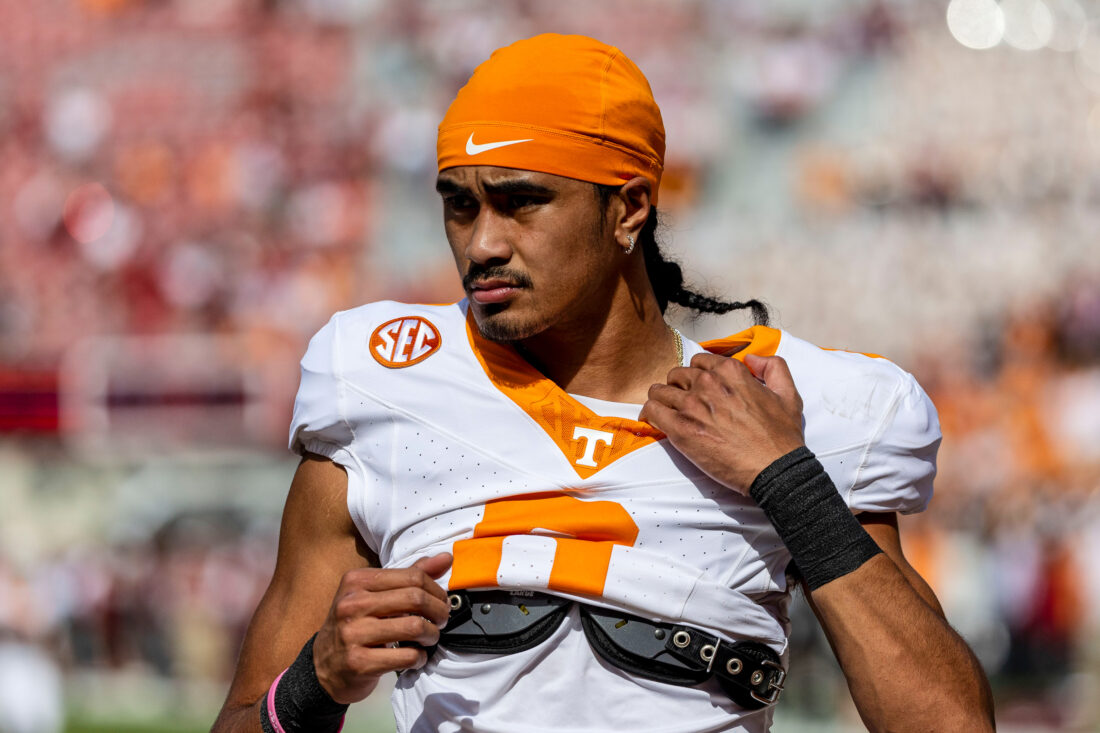

FILE – Tennessee quarterback Nico Iamaleava (8) warms up before an NCAA college football game against Alabama, Saturday, Oct. 21, 2023, in Tuscaloosa, Ala. (AP Photo/Vasha Hunt, File)
(AP) — The surprise transfers of brothers Nico and Madden Iamaleava have prompted fresh questions about contracts and name, image and likeness buyouts for athletes in a college sports landscape looking increasingly like the pros.
Nico Iamaleava, who led Tennessee to the College Football Playoff last season, walked away from a reported $2.4 million NIL contract to seek higher pay elsewhere. He joined UCLA on Sunday, reportedly for half the money though terms of any NIL deal were not released.
Arkansas freshman quarterback Madden Iamaleava entered the portal this week not long after spring practices wrapped up and will join his brother at UCLA, according to multiple media reports.
Arkansas athletic director Hunter Yurachek released a statement indicating he would support efforts by the Razorbacks’ NIL collective to enforce buyout clauses in athlete contracts. Iamaleava reportedly had a contract valued at $500,000 upon signing with Arkansas on Dec. 4, according to reports.
Arkansas Edge, the school’s collective, requires Iamaleava to repay 50% of their remaining contract value for leaving before the contract expires, according to reports. The Arkansas athletic department declined to comment and Arkansas Edge did not respond to messages.
Yurachek, in a post on X that did not name Iamaleava, wrote: “I have spoken with the leadership team at Arkansas Edge and expressed my support in their pursuit to enforce their rights under any agreement violated by our student-athletes moving forward. We appreciate Edge’s investment in our student-athletes and acknowledge the enforcement of these agreements is vital in our new world of college athletics.”
The latest cycle of transfers has seen a lot of chaos and accusations of tampering. Earlier this year, Wisconsin said it had “credible information” that Miami and Xavier Lucas made impermissible contact with each other before the former Badgers cornerback decided to transfer to his home-state school.
All this comes with final approval of the $2.8 billion NCAA antitrust settlement looming. The plan will clear the way for Division I schools to share up to $20.5 million each with their athletes annually but also assess NIL deals athletes sign with third parties.
The settlement would go into effect July 1, and athletes have been scrambling to renegotiate contracts or find better opportunities at new schools before deals valued at $600 or more must be approved through a clearinghouse that will be administered in part by financial giant Deloitte in a bid to establish fair market value.
Rich Stankewicz, the director of operations for the Happy Valley United collective backing Penn State athletics, said he thinks there is a time and place for NIL buyouts, citing a spring transfer departing before playing a snap as an example. He favors incentive-based contracts contingent on in-season academic and athletic performance.
“If more money is paid out in those time frames, that gives incentive for the player to stay and see those dollars from their contract, rather than potentially collecting up front and then deciding the grass is greener somewhere else three months later,” he told the Associated Press.
Russell White, president of The Collective Association, said buyout clauses have been baked into high-value NIL contracts for some time but that those clauses probably will become standard for all athletes going forward.
White said collectives have been mostly successful quietly coming to settlement terms with athletes who leave — which, according to New York-based employment attorney Dan Ain, is advantageous to both sides.
“Suing 19-year-old kids isn’t a great look,” Ain said.
Iamaleava, who is from Long Beach, California, initially pledged to UCLA last May. He made a signing-day flip from the Bruins to Arkansas and enrolled in January. He was the No. 3 quarterback in spring practice behind Taylen Green and KJ Jackson.
Some of the questions amid all the transferring and severed deals center on whether NIL deals are enforceable contracts with the NCAA settlement not yet approved.
Matthew Shepherd, an attorney and member of the Arkansas House of Representatives, co-sponsored the state’s NIL law. He said if Madden Iamaleava left on his own volition, the terms of the NIL deal would be subject to standard contract law.
Shepherd noted the NIL law was modified in 2023 to include a provision prohibiting a third party from offering NIL inducements to an athlete who already is enrolled at one of the state’s schools or who has entered into an enrollment contract. If that happened in Iamaleava’s case, Shepherd said, the school or third party such as an NIL collective could take legal action.
Missouri-based sports attorney Mit Winter said collectives could be hard-pressed to win court fights. If Madden Iamaleava’s contract would require him to pay back 50% of its remaining value, perhaps $200,000 in liquidated damages, Arkansas Edge would have to show why that is a reasonable estimate of damages.
Winter said if a court finds that amount to be more of a penalty than a reasonable estimate of damages, the buyout would be unenforceable.
NIL
Decision day here for 5-star QB Jared Curtis between Georgia football Oregon
This Sentell’s Intel rep on Georgia football recruiting has the latest with 5-star QB Jared Curtis at Nashville Christian in Tennessee. He ranks as the nation’s No. 1 QB and the No. 2 overall prospect for 2026 on the 247Sports Composite. The On3 Industry Ranking has him as the No. 1 QB and No. 6 […]
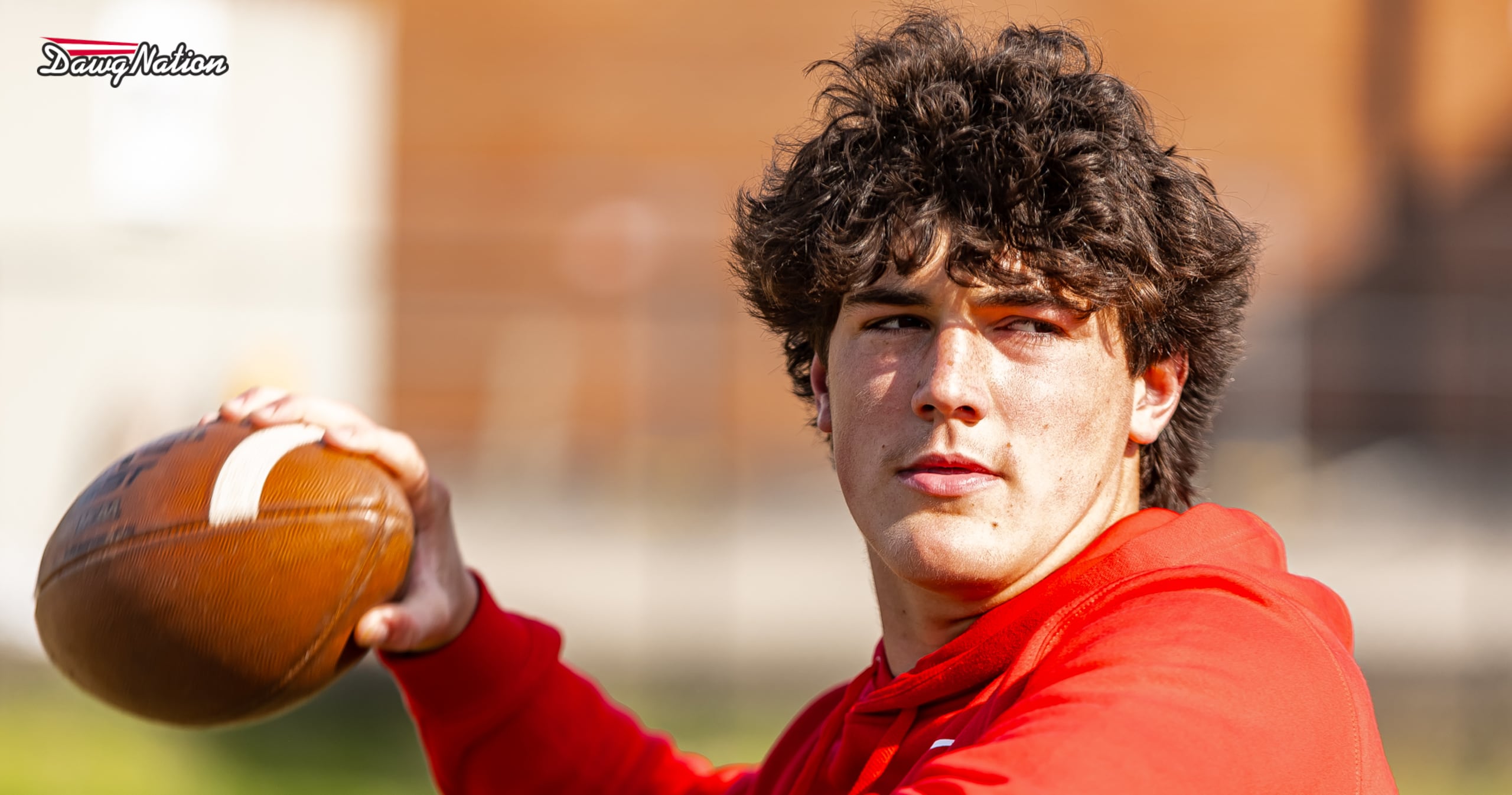
This Sentell’s Intel rep on Georgia football recruiting has the latest with 5-star QB Jared Curtis at Nashville Christian in Tennessee. He ranks as the nation’s No. 1 QB and the No. 2 overall prospect for 2026 on the 247Sports Composite. The On3 Industry Ranking has him as the No. 1 QB and No. 6 overall.
As far as recruiting storylines go, there will be a ceremony this evening that offers the Super Bowl of decisions. It’s hard to top the intrigue of a 5-star QB commitment shutting down his process.
Jared Curtis, the nation’s No. 1 QB prospect for both of the major recruiting ranking composites, will make his decision known at 5:30 PM EST at Nashville Christian School in Tennessee.
He’s down to Georgia and Oregon.
Cox Media property DawgNation.com will be on hand to stream the decision across all of its social media platforms.
Curtis, 18, will have the choice of taking millions of dollars per season from either program, despite the increased scrutiny of payments to college athletes through the proposed House revenue-sharing settlement. He will do so from a combined pool of revenue streams from either school, their respective collections, and also NIL-based endorsements that will have to go through review by a third party.
This decision is so close that DawgNation has learned Curtis’s representatives have prepared two different announcement videos to go in either direction of the decision. It is also likely that his representation won’t know until he makes that decision and then shares one of those two videos across his social media.
The mystery could also extend to both programs. They will learn his choice when he shares his decision first at Nashville Christian and then with the world.
For Georgia, it offers the rare chance at a recommitment. Curtis, who has been prioritized for years, first committed to the Dawgs on March 23 of last year.
He reversed that decision about seven months later. Curtis told DawgNation that he backed off that pledge because it just didn’t feel right needing to visit other schools while still being committed to Georgia.
But there was hope.
“I’m still interested in Georgia as long as they are interested in me,” he said back in October.
Oregon was one of those schools he wanted to check out. Curtis was even quoted last fall as giving Dan Lanning’s Ducks the “leader” tag. There is no perceived leader heading into today’s announcement.
If Curtis chooses Georgia and goes on to enroll early this December, he will be the highest-rated QB signee for the program since Justin Fields in 2018. He’d be the first 5-star QB signee since Brock Vandagriff in 2021.
The national high school rankings for Curtis are also higher than those of former 5-star signees Jacob Eason and Matthew Stafford.
The latest intel swirling around this decision gives no school a clear edge, although there is some guarded optimism in Athens due to familiarity and location. Oregon’s chief pitches are centered around its program being more successful in developing the QB position of late and its offensive prowess.
There was one other factor likely to heavily impact this choice, but an interview with Peter Webb of QB Reps last Friday seems to have changed that perception.
Did you know the weekly DawgNation.com “Before the Hedges” program is available as an Apple podcast? Click to check it out and download it.
Jared Curtis: How much will money matter here?
There’s an ongoing perception that the school with the biggest billfold is going to win out in this recruitment. This is, of course, the NIL era, where there have been many publicized recruitments of late, where 5-star QBs signees have reportedly commanded packages of $2 million to $3 million per season.
Curtis was even given an NIL evaluation by On3.com of $2.7 million.
Webb told DawgNation that neither Georgia nor Oregon was the highest bidder for Curtis. There were other schools, including another SEC school, that had the largest offer. His firm represents NFL Quarterbacks Bo Nix and Riley Leonard and also has numerous clients in college football at Alabama, Clemson, Illinois, Tennessee, and Texas, among other schools.
They’ve represented Curtis dating back to his sophomore year when some trading card and apparel deals came his way. According to Webb, this decision will not simply be a transactional win for the balance sheets and collectives representing each school.
DawgNation has learned neither of these schools was the highest bidder for Curtis.
“It’s pretty simple,” Webb said. “If Jared was chasing the best compensation package, this may have been over a long time ago. These schools may not have even been in the finals. His interest in Georgia and Oregon – and really the difficulty in this decision – has been motivated by the relationships he’s developed during the recruiting process and the unique opportunities both programs provide. We won’t even know what this complete financial framework looks like until after he commits to a university.”
Additionally, Curtis never went to competing programs and set a number for the market.
“We were very clear from the beginning that you want to list out things that are important to you,” Webb said. “You want to look at the location, the campus, the coaching staff. You want to look at the brand, the history of the program, the QB development, the quarterback coach, the offensive coordinator, and the system. You want to look at the QBs that have come through their program and made it to the next level. You want to look at the recruiting classes. Look at the room. Are there some older guys in the room that you could learn from?”
It wouldn’t be a stretch to surmise the NIL piece is less than 15 percent of the overall puzzle here.
“NIL is a part of it, that’s the reality and the opportunity of the landscape right now, but for Jared, it has been a relatively small factor,” said QB Reps marketing director Doug Young. “He knows that getting it done on the field and in the classroom is what’s most important and what will set him up for long-term success. We are proud of Jared for thinking holistically about this decision. It’s a mature approach, and it has been very refreshing to watch it unfold.”
The belief is that Georgia’s bid for the nation’s top QB prospect is competitive with the going rates for QBs nationally over the last few cycles.
What would happen here if one of these two schools came in at the 11th hour with a significantly larger offer? Would that sway the decision? Webb said that wasn’t likely to affect this decision.
Curtis has weighed this as if both schools offered the same financial package. The next step was to consider all the other factors and answer this question: Where will he be the happiest playing college football? He took that to heart.
Have you subscribed to the DawgNation YouTube channel yet? If so, you will see special 1-on-1 content with key 2026 prospects like Tyler Atkinson, Lincoln Keyes, Brady Marchese and Kaiden Prothro.
Why Jared Curtis is wanted by Georgia and Oregon
Curtis, who led his team to the state title game as a freshman, had a massive junior year. He guided his Eagles to a 12-1 record and a runaway 49-21 win in his return to the state championship. The 6-foot-3-plus, 225-pound rising senior raised his completion rate 15 percent in throwing for 2,830 yards, 40 touchdowns, and just three interceptions.
He has elite arm talent, but while he’s just in high school, there are sentences that can be formed that project his ability to spin it with the Josh Allens and Matthew Staffords of the football world.
Aside from his 70 percent completion rate as a junior, the other wrinkle to his game would be his legs. Curtis ran for 637 yards and 18 touchdowns last fall. While he won’t be running away from elite defenders in the SEC or even the Big Ten, he projects to be a serious red-zone weapon.
The 5-star now holds a 62 percent career completion mark while throwing for 7,665 yards, 92 touchdowns, and 19 interceptions at a level that equates to something between Class 1A and Class 2A in Georgia.
He’s been able to make plays with his legs on the regular, running past boxes that he’s either bigger or faster than or both. Curtis has a career average of 6.7 yards per rush attempt. He’s totaled up 1,663 rushing yards and 38 touchdowns.
This decision won’t be the only one for Georgia this month. Or for these two schools. Georgia, Miami, and Oregon are seen as the chief contenders for 5-star OT Jackson Cantwell in Missouri.
Cantwell has sped up his timetable with a decision set for May 13. The nation’s No. 1 OT prospect has also recently scheduled a last-minute visit to UGA set for May 10.
The Bulldogs have never signed the nation’s No. 1 QB and No. 1 OT prospect in the same cycle before under head coach Kirby Smart.
Have you seen this week’s “Before the Hedges” weekly recruiting special on YouTube yet? Check it out below.
SENTELL’S INTEL
(check on the recent reads on Georgia football recruiting)
NIL
NIL is changing college sports; for better or worse?
HUNT VALLEY, Md. (TNND) — It’s been nearly four years since the NCAA enacted a new policy allowing college athletes to profit from their name, image and likeness, and just a few weeks since a federal judge opened the door for college athletic departments to pay athletes directly. Much of the details are still being […]
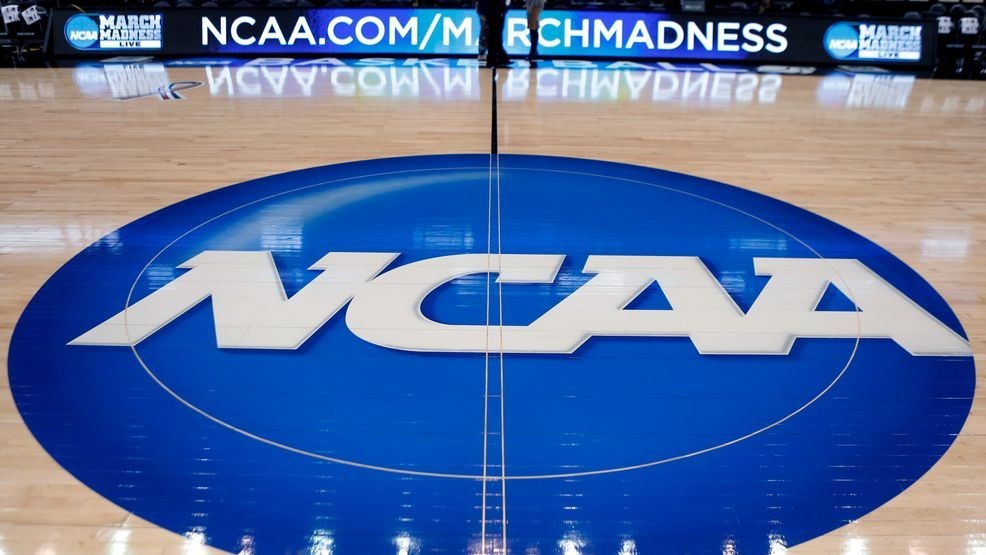
HUNT VALLEY, Md. (TNND) — It’s been nearly four years since the NCAA enacted a new policy allowing college athletes to profit from their name, image and likeness, and just a few weeks since a federal judge opened the door for college athletic departments to pay athletes directly.
Much of the details are still being worked out in the courts. Key components like roster limits, scholarship limits and payment pools are still up in the air.
As is a governing body to oversee all of these new rules, since most current regulation is a patchwork of state laws, legal settlements and NCAA rules.
But, we are starting to see the impacts of college athletes getting paid – and what it means for the enterprise as a whole.
Depending on who you ask, the historical shift is: long overdue for athletes who’ve spent thousands of hours grinding for their craft; late to the party in terms of global sports; the official death certificate for amateurism and the “student” side of “student-athlete”; or, an inevitable reality that has to run wild before it gets reined in and regulated.
To the league itself, it’s a positive step.
When a judge granted preliminary approval for a framework for schools to pay athletes, NCAA President Charlie Baker said it would “help bring stability and sustainability to college athletics while delivering increased benefits to student athletes for years to come.”
The push for college athletes to get paid spans decades, with legal challenges and legislative efforts dating back to at least the early 2000s. Which is surprising, considering the NCAA has been a multi-million dollar industry for several decades, and a multi-billion dollar industry for about a decade.
That disparity is due to the idea of “amateurism,” a word many experts and analysts use when they cite concerns about completely commercializing college sports. That idea goes back more than a century, to 1800s England, where sports were only for the wealthy, and the working class didn’t want them to be able to pay their way to victory.
“I don’t want to say [amateurism] is going to die, but it will certainly be the commercial aspects that are going to permeate,” said David Hedlund, the chairman of the Division of Sport Management at St. John’s University. “I think we’re going to see and hear less and less about amateurism, and college sports are going to look more like professional sports, or a training ground for professional sports.”
The idea that sports are for enjoyment and the love of the game rather than money is a noble one. And players can love the game and make money off their talents at the same time.
But many experts say amateurism has long been dead; the NCAA was just, for whatever reason, the last organization behind the International Olympic Committee to let it die. It’s part of an effort to keep pace with the rest of the world. Overseas soccer and basketball players are spotted when they’re 12 to 14 years old, and go pro when they turn 18.
“We’re in a global marketplace,” said Matt Winkler, a professor and program director of sports analytics and management at American University. “We sort of have to keep up with the other nations if we want to strive and have those great moments in sports for our Olympic teams and our World Cup teams and so forth.”
Coaches have long been compensated, and universities have long profited off their sports teams.
“The money has always been there. It’s just a lot more front-facing now, I think, than it’s been in the past,” Hedlund said.
Some sports analysts say it was quite front-facing in this year’s NCAA Men’s Basketball Tournament.
March Madness was devoid of any significant upsets or Cinderella teams. For the first time in five decades, every team that made it to the Sweet 16 came from a power conference, including all four No. 1 seeds and all but one No. 2 seed.
And, every team that made it to the Final Four was a No. 1 seed.
ESPN analyst Stephen Smith said NIL deals and the now no-limits transfer portal are to blame for why mid-major programs didn’t see much success, and top-tier schools prevailed.
“If there was no NIL, if there was no portal and you have the mid-majors go 0-6 in the second round, please, we ain’t sweating that,” Smith said. “But when you’re able to point to rules that have been implemented that ultimately shows itself to have inflicted upon the game itself, that’s dangerous.
“College basketball as we knew it – which, to me, is all about March Madness – will cease to exist. Because there’s no madness.”
Experts say there is a serious question mark about the current state of how much colleges can pay to entice players, and how many times players can be enticed enough to transfer.
But not all believe it has to be the death of March Madness or competition in college sports. After all, there’s still Division 2 and 3 universities.
Richard Paulsen, a sports economist and professor at the University of Michigan, said it’s hard to gauge the impact of NIL deals and the transfer portal on competition. Because while the top ten or so power schools may be able to offer the most money to the elite players, there’s still a lot of talent out there.
“The top schools have an advantage in getting the A-level talent, but some of the players that might have sat on the bench at a top school previously could be enticed away with NIL money coming from a second tier school,” Paulsen said. “So I think the impact on competitive balance is maybe a little bit less clear.”
Paulsen says, as a professor, he is worried about the impact NIL deals – particularly million-dollar ones – can have on the students themselves, some 18, 19, 20 years old. It raises the question, does a teenager or young adult need this much money?
Shedeur Sanders is 23 years old, and his NIL valuation at the University of Colorado was roughly $6.5 million. Granted, he’s the son of NFL Hall of Famer and head coach for Colorado Deion Sanders.
But, his 2024 stats were top five in completion percentage, passing touchdowns and yards. Several analysts had him as the top prospect in the 2025 NFL draft, but he slid down to the fifth round, shocking much of the sports world.
Various reports place blame on other reasons – maybe he took more sacks than he should have, maybe NFL executives see traits we can’t see, maybe he bombed interviews with the managers, maybe it had to do with his Hall of Famer dad. And he certainly wouldn’t be the first prospect to get picked later than expected and prove all the teams that passed over him wrong.
But, he’s also losing money by going pro. The iced out, custom “Legendary” chain he wore on Draft Day reportedly cost $1 million.
“It is at least worth noting that five years ago, he wouldn’t have had the online presence that he had, and that could have turned off some NFL teams,” Paulsen said. “Without being in the rooms, I don’t know if it did, but that is possible, and it’s not something that would have been possible even five years ago.”
It begs the question, is it even worth going pro for these top-tier college athletes with insane NIL deals?
In the NBA, new data shows it may not be. The league announced last week just 106 players declared early for the 2025 draft. It’s the fewest since 2015. The number typically hovers around 300.
The drop in early entrants could be lingering effects of the extra COVID year.
But, next year, ten schools will pay their rosters somewhere in the neighborhood of $10 million, including several million dollars per top player. That’s far more than the players would make if they were a second-round draft pick in the NBA.
Winkler said the combination of competitive rosters and the scope of these NIL deals has more to do with this drop in early declarations.
“These deals are getting so big that unless you’re going to be a first round draft choice, maybe if you’re going to be kind of a lottery pick or a top 10, 15 pick, it would be better for you to exhaust your eligibility on a major team, because you’re going to make more,” he said.
So, it might be financially advantageous for athletes to wait on the pros. Some announcers were even suggesting Sanders should go back to college if the NFL didn’t deem him ready for the show. (NCAA rules prohibit him from doing so anyway; he declared for the draft and signed with an agent).
But what about the fact that these players, who become millionaires, are still students?
Schools are working to provide resources for these athletes so they can get advice on what to do with their wealth, so that they don’t spend it irresponsibly. Which is not to assume all of them would; it goes without saying this money could greatly benefit an athlete who grew up in poverty and change the trajectory for his/her family.
But Paulsen says he worries about the “student” side of “student-athlete” when we start talking about millions upon millions of dollars and students transferring to whichever school offers them the most. Sometimes credits don’t transfer; sometimes players could feel pressure to fulfill their NIL commitments over their studies, when the stakes are that high.
At a young age, these players are under an unprecedented amount of pressure, from their coach, from their family, from their financial adviser, from social media, from broadcast exposure, from stakeholders, from the tens of millions of people who can now legally bet on them.
“Players should be able to leave bad situations, absolutely, and I certainly support players’ autonomy and chasing financial benefit from their athletic talents,” Paulsen said. “But if we’re going to call them student athletes, we should have some emphasis on the student part of that too. Some of these rules that are helping the athlete are hurting the student.”
One of those rules, he says, is the transfer portal. But in addition to harming the students’ academic careers, experts say this also takes a toll on teams and fans of those teams.
Take Nico Iamaleava for example. The star quarterback abruptly parted ways with Tennessee over an alleged compensation dispute with the school’s collective. He demanded an NIL readjustment to $4 million to keep playing for the Vols, and when they said no, he transferred to UCLA, though it’s unclear if they met his demands.
The exit shocked his teammates in Knoxville, with one of his receivers and defensive backs, Boo Carter, telling reporters, “He left his brothers behind.”
But the new pay-to-play system does also beg the question of school loyalty, not just for the players, but the fans too.
Paulsen says roster continuity, players spending all four years playing for one team, has been an endearing feature of sports like women’s college basketball, when you look at the legacies, for example, Caitlin Clark built at the University of Iowa, or Paige Bueckers at the University of Connecticut.
“I do think there’s definitely some extent to which all this player movement can have negative consequences,” he said.
But, some experts doubt fans of teams need to see the same or similar team year to year.
After all, this past NCAA Men’s March Madness Championship between Florida and Houston – the one ESPN’s Smith said featured no madness at all – scored 18.1 million viewers on CBS. That’s up 22% from last year’s championship, and the biggest audience since 2019.
The Final Four games, featuring all No. 1 seeds, ranked as the most-watched games in eight years.
In other words, so far, so good when it comes to college sports fandom.
One thing broadly agreed upon among experts is that competition must remain intact. The Florida-Houston matchup was a nailbiter.
“The biggest thing that would kill sports is if there is no competitive balance,” Hedlund said. “It is known when you have a really great team being a not-so-great team, if the great team probably will win, people don’t want to watch.”
People still appear to be watching. If they stop, one could assume the NCAA would change its course, or it’d be out of all its money too.
Plus, these experts expect regulation soon – possible measures like transfer restrictions, collectively bargained salary caps, conference realignment to avoid concentration, turning athletic departments into LLCs, putting degree completion into bylaws and evening out the number of roster spots, among other rules.
Experts say: be patient, wait for the legal fights to run their course, and wait for the brightest minds in sports – and Congress – to come up with a solution that pleases the players, teams, coaches, schools and fans.
“This is fundamental to the success of sports, so we just need to figure out what rules, what regulations, what governing bodies, how do we facilitate this?” Hedlund said. “We don’t want to ruin sports. That’s what’s at stake here.”
Winkler says it all comes down to the most “hardcore” stakeholders: fans and alumni. If the SEC and Big 10 just ganged up and created their own Premier League and college sports turned into checkbook sports, it could threaten that school pride.
“This year, we definitely saw cracks in the system,” Winkler said. “If the best athletes just go to the top, are [fans] rooting for an inferior product? Are they still going to have that affinity for their school, their team, their degrees, and people that are doing it? This is really going to test that.
“[Schools] have two key pressure points: keep getting a lot of money from TV so you can fund your athletic department, and keep alumni, fans and donors still feeling as engagedThere’s a lot to be worked out in the next several months and probably the next year to really get a boiler plate idea of what the rules and regulations need to be.”
NIL
Ball State University – Official Athletics Site
» THIS WEEK IN BALL STATE SOFTBALL: The Ball State softball team returns to Firestone Stadium in Akron, Ohio, for the 2025 Mid-American Conference Softball Championships May 7-10 … The Cardinals enter as the No. 4 seed and will battle No. 5 seed Akron in the opening game of the tournament Wednesday at Noon. » […]
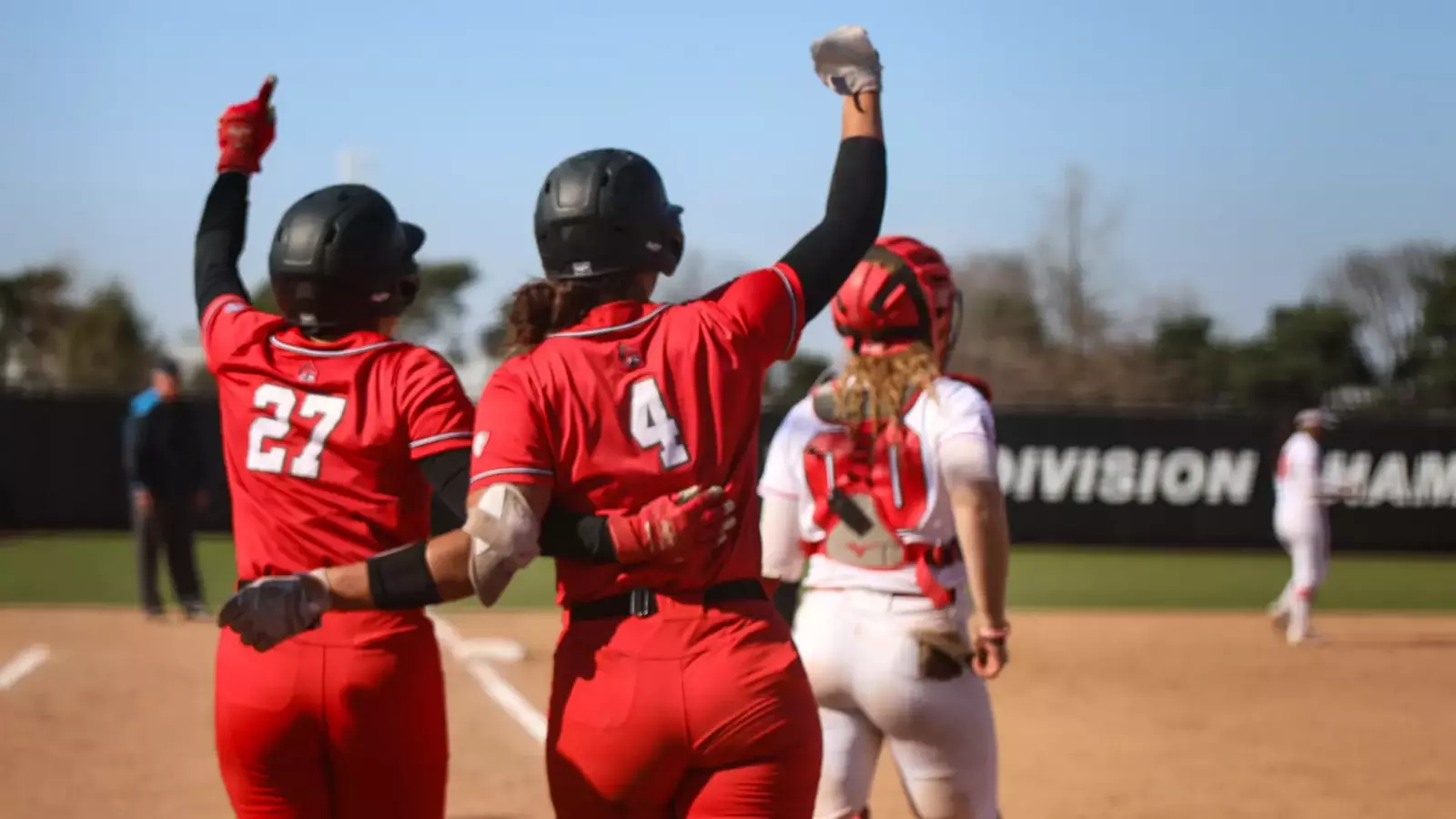
» THIS WEEK IN BALL STATE SOFTBALL: The Ball State softball team returns to Firestone Stadium in Akron, Ohio, for the 2025 Mid-American Conference Softball Championships May 7-10 … The Cardinals enter as the No. 4 seed and will battle No. 5 seed Akron in the opening game of the tournament Wednesday at Noon.
» THE OVERALL RECORD: Ball State enters the MAC Softball Championship with a 1208-1187-4 (.504) overall record dating back to 1975 … With its 5-2 win at Ohio on April 29, the Cardinals reached the 30-win mark for the 17th time in program history and the 12th time in the past 18 campaigns.
» BALL STATE IN THE MAC CHAMPIONSHIP: Ball State enters the 2025 MAC Softball Championship with a 31-31 all-time record in league tournament play after its run to the championship series last season … The Cardinals won the event in 1998, 2010, and 2015 with perfect 4-0 marks … Ball State finished as runner-up in the 2001 (3-2 record) and 2024 (4-2 record) tournaments … A complete MAC Softball Championship history can be found on page 3.
– VERSUS NO. 1 MIAMI: After posting back-to-back shutouts of the RedHawks on April 12 to win the 2025 regular season series by a 2-1 margin, the Cardinals hold a 61-58 lead all-time versus Miami … However, the RedHawks hold a 5-2 edge in MAC Softball Championship play, including an 8-0 (5) win to claim the tournament title last season.
– VERSUS NO. 2 OHIO: The Cardinals and Bobcats split an April 29 doubleheader in Athens, helping Ball State maintain a 55-46-1 advantage in the all-time series … Ohio does hold a 3-2 edge in MAC Softball Championship play after the teams split a pair of games at last season’s tournament … BSU earned the last win, advancing to the title game with a 5-1 victory for its third elimination game win on May 10.
– VERSUS NO. 3 CENTRAL MICHIGAN: The Cardinals and Chippewas closed the 2025 regular season in Muncie this past weekend with both squads earning a shutout win … After the split, CMU holds an 80-35 advantage in the all-time series … That includes a 5-5 split in MAC Softball Championship play, with the Cardinals earning a 7-6 victory over the Chippewas in its first of three elimination game victories on May 10 last season.
– VERSUS NO. 5 AKRON: Ball State won two of the three games played in Akron this season, extending its lead in the all-time series to 49-26 … The series lead includes a 3-2 edge in MAC Softball Championship play, with the last tournament meeting being a 10-2 (6) Ball State victory on May 6, 2015 … This will be the first tournament meeting with former Ball State head coach Craig Nicholson (2007-13) leading the Zips.
– VERSUS NO. 6 NORTHERN ILLINOIS: The Huskies swept an April 1 doubleheader versus the Cardinals in Muncie, extending its lead in the all-time series to 55-40 … Included in the total is an 8-2 NIU lead in MAC Softball Championship play … The teams last met in the tournament May 12, 2018, with the Huskies eliminating the Cardinals courtesy of a 4-3 victory … NIU also handed BSU its first tournament loss that season with a 3-1 win.
BALL STATE NEWS & NOTES:
» EARNING HER SPOT AMONG THE NATION’S BEST: Thanks to her solid play so far this season, redshirt senior catcher McKayla Timmons has been recognized as one of the nation’s top catchers, including earning the No. 2 spot in the latest D1Softball.com Power Rankings released April 24 … She also moved up three spots to No. 4 in the latest SoftballAmerica.com position rankings released April 28 … Timmons has earned those accolades by leading the MAC and ranking 44th nationally with a .430 batting average … Timmons has blasted a team-leading 15 home runs this season and ranks ninth nationally in walks per game at 0.91 … In addition, Timmons ranks fourth nationally in on base percentage (.608), 14th in slugging percentage (.906), 39th in runs scored (54) and 62nd in RBIs (53).
» CAREER IMPACT: Along with all her success this season, McKayla Timmons is set to end her collegiate career as one of the most prolific players in program history … In last Tuesday’s 5-2 win at Ohio, she became just the 11th player in program history to reach 200 career hits and she currently ranks first on Ball State’s career list in on base percentage (.512), second in slugging percentage (.782), second in home runs (56), second in RBI (178), third in batting average (.383) and fourth in runs scored (157) … She also owns the program record for times being hit by a pitch at 44, while her 107 career walks are fifth.
» SHINING BEHIND THE PLATE TOO: In addition to pacing the offense, McKayla Timmons has proven to be one of the nation’s top threats behind the plate and finished the 2024 season ranked as one of the nation’s best catchers by SoftballAmerica.com … She was fifth on SA’s final catchers list and 47th among the nation’s top 100 players … The effort was aided by Timmons throwing out 11 of the 37 runners attempting to steal a base on her last season … She has already caught nine runners trying to steal this season, while surrendering just 17 stolen bases, and has picked off a pair of runners at first base.
» ON THE BASES: Ball State has proven to be one of the nation’s craftiest teams on the base paths, ranking first in the MAC and 24th among all NCAA Division I programs with a 1.81 stolen bases per game average … The Cardinals have successfully stolen 85 of the 99 bases it has attempted to steal, led by 21 stolen bases from McKayla Timmons which is third in the league and 73rd nationally … Overall, 14 different Cardinals have stolen at least one base, with redshirt junior second baseman McKenna Mulholland ranking second on the squad and seventh in the MAC with 16 and sophomore shortstop Maia Pietrzak ranking third on the squad and 10th in the MAC at 14 … Conversely, Ball State has limited opposing squads to just 19 stolen bases on 28 attempts this season … Only 11 teams in the country have limited teams to less stolen bases, with the next best MAC school being Central Michigan at 25.
» ON THE OFFENSIVE FRONT: Ball State has been putting on an offensive clinic so far this season, ranking first in the MAC and 22nd nationally by averaging 6.79 runs per game … The Cardinals have earned eight run-rule victories and have scored 10-or-more runs in 13 games this season … Overall, Ball State is out-scoring opponents 319 to 202 and owns a 24-4 record when scoring at least five runs … In fact, Ball State’s 319 runs scored are already the seventh-most in a season in program history, with the record being the 368 runs scored by the 2012 squad.
» TAKING THE HIT: Ball State’s offense is bolstered by its ability to get on base, and one area the Cardinals excel in is staying tough in the box and getting hit by pitches … The Cardinals currently lead the nation in being hit 86 times, which is already a BSU single season record topping the previous mark of 55 set in 2015 … Leading the way is McKenna Mulholland who broke the program’s single season record in the regular season finale vs. Central Michigan with her 16th HBP this season which is ninth nationally … McKayla Timmons and Maia Pietrzak are right behind at 15 and 13, respectively … The next closest team is St. John’s which has been hit 67 times over 55 games, eight more than the Cardinals have played.
» THE WHITNEY EFFECT: Junior Ella Whitney, who played her first two seasons of collegiate softball at FIU, is second in the MAC and 33rd nationally with her 18 pitching victories … Over 155.1 innings of work, the two-time MAC Pitcher of the Week honoree has compiled a 2.97 ERA which is fifth in the MAC … Whitney has also limited opposing batters to a .230 average against which ranks first in the league, while owning the third-best WHIP in the MAC at 1.23.
» MORE ON WHITNEY: A two-way player for the Cardinals, Ella Whitney is also a big offensive threat, boasting a .313 average and ranking second on the team in both home runs (9) and RBIs (47) … She recorded Ball State’s first triple of the year and is tied for second on the team with 11 doubles.
» SOME OF THE NATION’S TOUGHEST: Maia Pietrzak and senior outfielder Kara Gunter enter the MAC Softball Championship as two of the nation’s toughest batters to strike out … Pietrzak is fourth in the MAC and 37th nationally at one strikeout per every 25.3 at bats, while Gunter is sixth in the MAC and 63rd nationally at one strikeout per every 21.6 at bats.
» MORE ON PIETRZAK: Maia Pietrzak is having a spectacular sophomore season, ranking second on the team and 13th in the MAC with a .362 batting average … In fact, she leads all MAC players and ranks 18th nationally with 59 runs scored which is the third-most in a single season in program history … She is also third on the squad with seven home runs.
NIL
Attorney says NCAA deal should resolve judge’s concerns over roster limits, criticizes Saban
An attorney in the $2.8 billion legal case reshaping college sports said Monday he thinks “the agreement we will reach with the NCAA will solve the judge’s concerns” over roster limits that have delayed final approval. Steve Berman, co-lead counsel for the defendants, told The Associated Press that all is on track to file paperwork […]
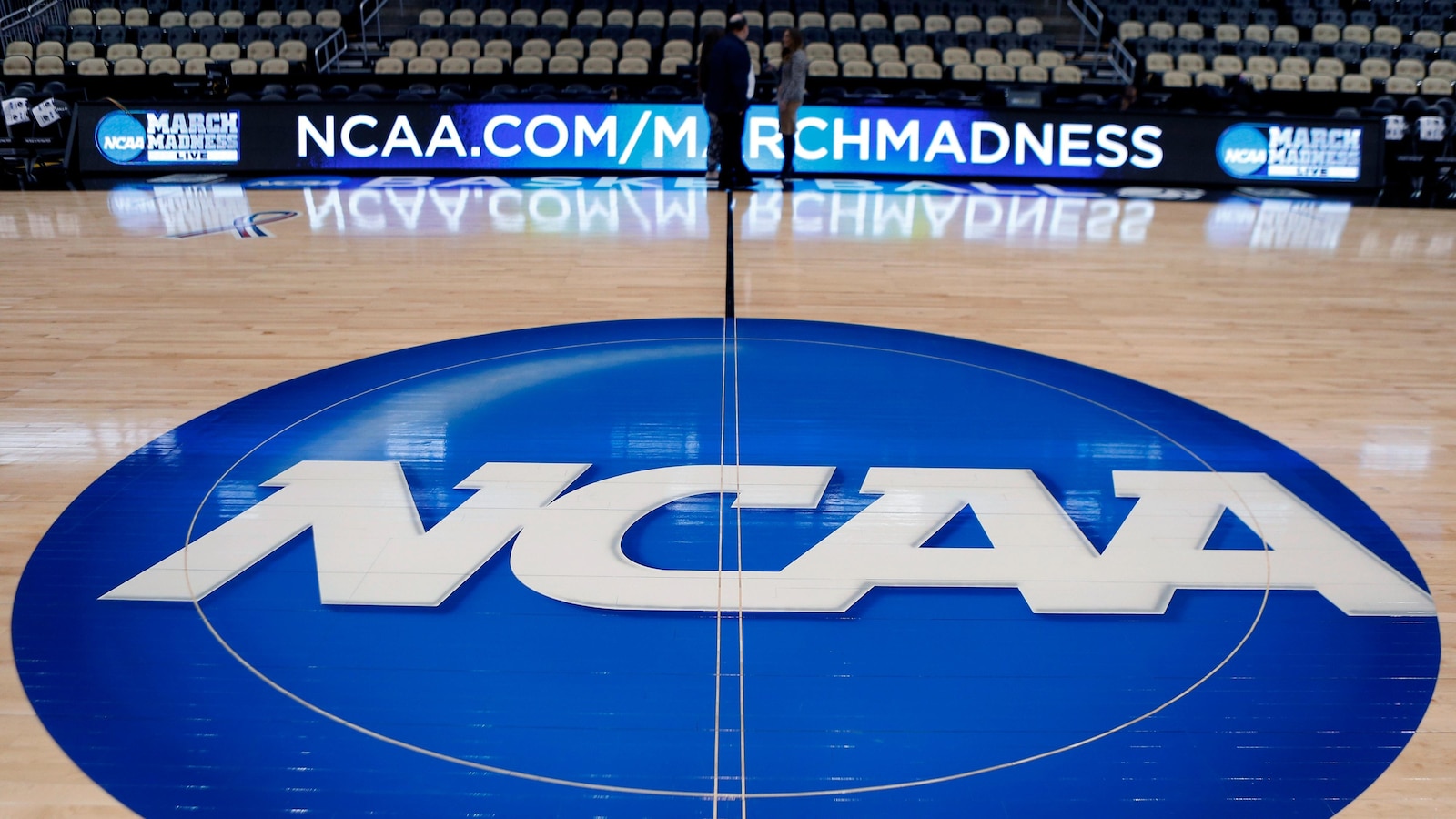
An attorney in the $2.8 billion legal case reshaping college sports said Monday he thinks “the agreement we will reach with the NCAA will solve the judge’s concerns” over roster limits that have delayed final approval.
Steve Berman, co-lead counsel for the defendants, told The Associated Press that all is on track to file paperwork by Wednesday, which is U.S. District Judge Claudia Wilken’s deadline for addressing concerns that prevented her from granting approval to the deal last month.
Berman said he created a chart listing the several dozen athletes who lodged objections to the agreement based on roster limits. He said he thinks almost every one will be offered a solution.
“We’re still negotiating, and I’m confident that everyone who lost a roster spot will have a chance to get a spot back,” he said.
He did not go into detail about whether those spots would be on their previous teams or new ones.
NCAA vice president of external affairs Tim Buckley said the NCAA would not comment on the litigation while negotiations are ongoing.
Wilken looked favorably on other key components of the settlement — namely, the up to $20.5 million some schools can pay their athletes for name, image likeness (NIL) deals and the nearly $2.8 billion in back pay that will go to players who said the NCAA and five biggest conferences wrongly kept them from earning NIL money.
But she asked lawyers to rework the part of the deal that will replace scholarship limits with roster limits. It’s a proposal that could make more overall scholarship money available but could cost thousands of athletes their spots on rosters in moves that began shortly after Wilken gave preliminary approval to the deal last fall.
The NCAA’s first response to Wilken’s request — which included the idea of “grandfathering in” current players to their roster spots — was to change nothing, arguing that undoing roster moves already in play would create more turmoil in an already chaotic process.
Wilken wasn’t moved, saying in her April 24 order that “any disruption that may occur is a problem of Defendants’ and NCAA members schools’ own making.”
Berman acknowledged that the objectors likely wouldn’t approve of the new deal being worked on.
“But I don’t think it’s going to be a big deal,” he said, because it is designed to find roster spots for virtually all the individual athletes who objected.
Berman also criticized Nick Saban after reports emerged that the retired Alabama football coach was urging President Donald Trump to undo damage he says has been caused by all the money flowing into college sports.
The Wall Street Journal reported Trump is considering an executive order that would call for some sort of structure behind NIL compensation now going toward players who are now able to move more freely between schools.
Berman said he believes an executive order would be subject to lawsuits “like there are against so many of his other orders.”
“But here, the question is, ‘Why does the president need to get involved?’” Berman said, while outlining the financial gains players have made in the NIL era. “Just because Nick Saban thinks he knows better and resents change? This is a coach who made more money off college football than any other coach, did absolutely nothing to make it right for these student-athletes. Why should he drive the president’s thinking?”
Saban, who made more than $11 million in his last year at Alabama and who some have said should become the commissioner of college football — a position that doesn’t exist — has said he isn’t completely against players making money.
But he has argued for rules and laws to keep things from looking like the “pay for play” model that the NCAA hopes to avoid but that is often what NIL payments look like.
___
AP college sports: https://apnews.com/hub/college-sports
NIL
Can Trump Fix College Football?
Coach Trump at a college-football game. Photo: Jabin Botsford/The Washington Post via Getty Im As most college-football fans have repeatedly heard, their sport is broken. In 2021, the U.S. Supreme Court finally put an end to the involuntary servitude of student athletes that created a vast treasure chest of wealth for their schools and coaches […]
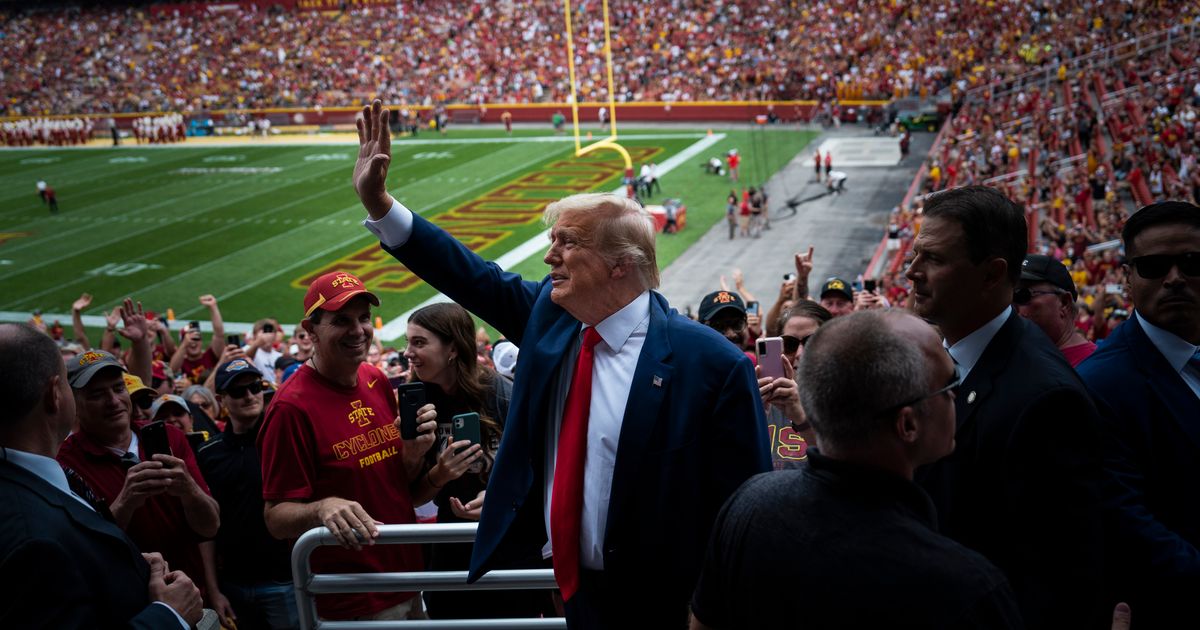

Coach Trump at a college-football game.
Photo: Jabin Botsford/The Washington Post via Getty Im
As most college-football fans have repeatedly heard, their sport is broken. In 2021, the U.S. Supreme Court finally put an end to the involuntary servitude of student athletes that created a vast treasure chest of wealth for their schools and coaches while only a small portion was kicked back to some of them via illegal under-the-table payments — a rather blatant violation of antitrust laws. College football (along with other collegiate sports) is in a wild-West era: Colleges compete for players, who can transfer repeatedly in pursuit of the best deal, financially and otherwise. This player-friendly situation has massively offended football traditionalists and exposed the fecklessness of the National Collegiate Athletic Association, the sport’s alleged governing authority. It’s also arguably unsustainable, thanks to the instability it has introduced into college-football rosters and conferences in a sport where competitive balance is important.
The obvious solution (modeled by professional sports teams) is to recognize players as employees and let them bargain collectively for pay and benefits, which would create enforceable labor contracts and bring order and predictability. But the same traditionalists who deplore the loss of student-athlete serfdom hate this idea, in part because it means abandoning the hoary myth of college athletics amateurism, and also because they tend to be crusty old reactionary men who would just as soon ban unions everywhere. So their preferred “solution” for the “crisis” in college football is to get an antitrust exemption from Congress that allows schools and conferences to reimpose at least some of the recently abolished shackles on player compensation and movement. Congress, of course, is reluctant to wade into this legal, financial, and cultural morass, and no filibuster-proof formula is evident either. Thus, inevitably, traditionalists have turned their lonely eyes to someone who is forever pleased to seize power and “fix” things: the 47th president of the United States.
Last week, after introducing Donald Trump as commencement speaker at the University of Alabama, where he was until last year the all-powerful and all-dominant football coach, Nick Saban bluntly asked the fixer-in-chief to intervene, as The Wall Street Journal reported:
The Trump administration is considering an executive order that could increase scrutiny of the explosion in payments to college athletes since 2021, after the president met with former Alabama coach Nick Saban, White House officials said.
Trump met with Saban on Thursday night when he was in Tuscaloosa to deliver the University of Alabama’s commencement address. Saban talked about “NIL” deals with Trump, telling the president how he believed the influx of money had damaged college sports.
“NIL” stands for “name, image and likeness,” but is used as a catchall term for the new era in which college athletes are allowed to earn money from their fame.
Since the crux of the matter is CFB’s ongoing, blatant violation of congressionally established antitrust laws, it’s unclear how an executive order could be relevant at all. But as we know very well by now, Trump isn’t inhibited by laws or constitutional provisions that limit his power. Some legal observers, like Sportico’s Michael McCann, are concerned that an executive order would create more, not less, chaos:
Any executive order that restricts athletes, schools, conferences or the NCAA would encounter a bevy of problems since it would interact, and possibly conflict, with multiple areas of federal and state laws …
There are also potential constitutional problems with a Trump executive order on college sports. It could run afoul of Equal Protection if college athletes are denied the same rights, including for employment and other economic opportunities, that their classmates enjoy. An executive order might also run afoul of the First Amendment to the extent it limits how college athletes express themselves.
A Trump intervention could also create yet another direct collision with the federal judiciary, insofar as district court judge Claudia Wilken is on the brink of finalizing a $2.8 billion antitrust settlement that will let schools use TV revenue to directly compensate athletes in addition to the NIL money they now bargain to receive. You can definitely and reliably imagine that college football’s old-school faction hopes Trump throws a big monkey wrench into the wheels of justice.
If the legal and financial complexity of the situation doesn’t faze Trump, he might also be motivated to intervene by some inflated notion of his own sporty expertise. He did, after all, once own a pro-football franchise for two seasons in the upstart United States Football League. But let’s recall how it ended: in a huge antitrust lawsuit against the NFL, which he won but which yielded a $3 jury reward that doomed the USFL to extinction. If he brings that sort of success to college football, traditionalists may learn there are far worse outcomes to the current crisis than unionization.
See All
NIL
Dan Lanning ready to ‘adapt’ based on House settlement ruling, roster limits
Whether it’s the Transfer Portal, NIL, conference realignment, or a new postseason format, college football has rapidly undergone changes in recent years. The Oregon Ducks and head coach Dan Lanning have, during that time, been among those who have best adapted to the changes. Now, it looks like another change is coming. Roster limits appear […]
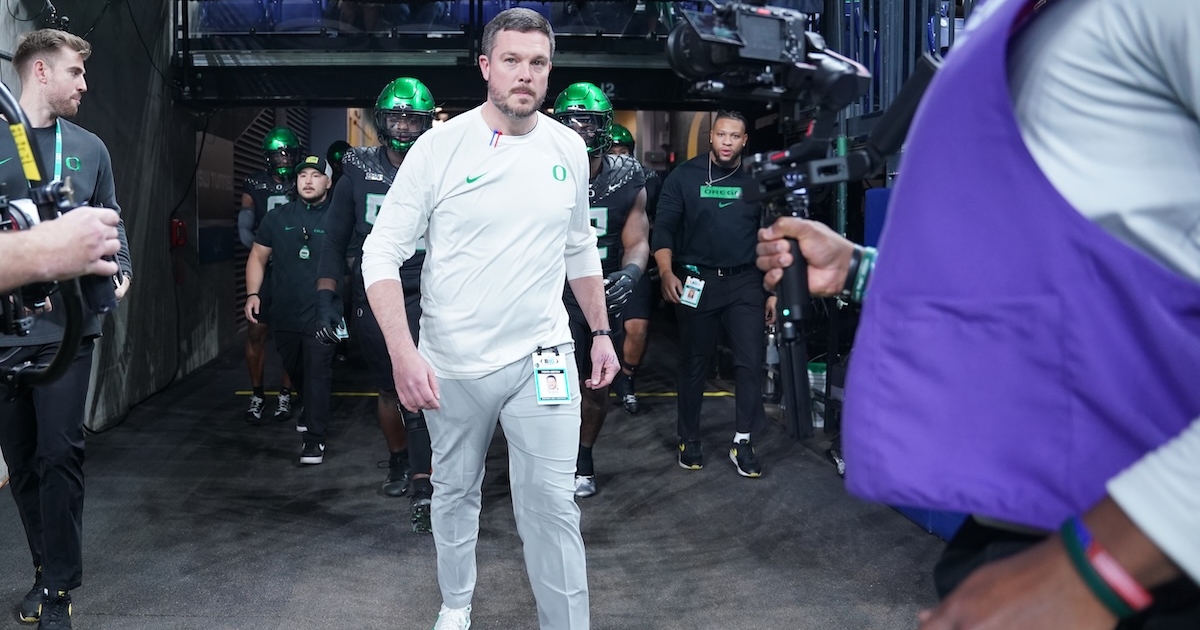
Whether it’s the Transfer Portal, NIL, conference realignment, or a new postseason format, college football has rapidly undergone changes in recent years. The Oregon Ducks and head coach Dan Lanning have, during that time, been among those who have best adapted to the changes. Now, it looks like another change is coming.
Roster limits appear to be on the horizon thanks to the House settlement. With that, Lanning knows he needs to be ready to take on another new challenge.
“Adapt,” Dan Lanning said. “You’ve got to be ready to adapt. That’s one thing we’ve learned about college football, right? It’s going to continue to change. You’ve got to be the team that’s ready to adapt when that happens.”
The House settlement is the settlement for a lawsuit that is set to allow direct payment to student athletes, but its scope has gone beyond. With Judge Claudia Wilken in charge of giving final approval for the settlement, both sides have been working through the details. That now includes roster limits, which propose football teams go down to 105 players. That cap would likely force cuts.
“I like our roster. I like who we have on our team right now. So, hopefully, every one of those players that have worked really hard gets the opportunity to be part of the roster in fall camp, but we don’t completely control all of that. So, we’ll see how it plays out.”
Wilken recently gave attorneys 14 days to change the language so that House Settlement regarding roster limits. That would make it so that they grandfather in roster limits or phase in the roster limits. So, while waiting for the final settlement, coaches like Lanning need to wait and see with their rosters.
While Wilken did give preliminary approval for the House settlement, she still needs to give it final approval. That language around roster limits is something that could completely disrupt things.
Ryan Day details plan to adjust when NCAA House Settlement determines roster size
Dan Lanning isn’t the only Big Ten head coach with concerns around roster size. Ohio State head coach Ryan Day also shared that he needed to put a plan in place depending on how things shake out.
“So, we’re looking at increasing it to 90 [scholarships]. That’s what the conversations have been, and then, like you said, it’s difficult when you think it’s going to be 105 and now they’re saying maybe it won’t go to 105, but if it does we better make sure we can pivot quickly. So, if the 105 cap isn’t put into play, we’ll operate at right around 120, 121, like we’ve been. Those are kind of the parameters that we’re working with right now, knowing we might have to pivot quickly, which I know is tough for a lot of those guys who are on the fence,” Day said.
“So, that’s kind of why we wanted to make sure we’re transparent but this is kind of the way it is in college football right now. You’ve got to be able to adapt quickly and move on the run. The easy thing to do is throw up your hands, get frustrated. But just try to adapt and communicate well and make sure we have everything we need.”
Under the current House Settlement, proposed rosters include football (105), men’s and women’s basketball (15), baseball (34), men’s and women’s soccer (28), softball (25) and volleyball (18). Some schools have already begun working to hit those limits.
-
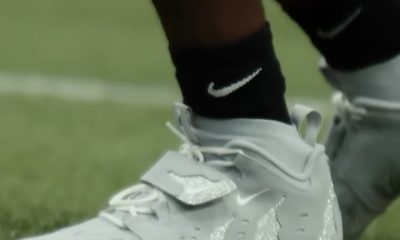
 Fashion1 week ago
Fashion1 week agoThis is poetry in motion.
-
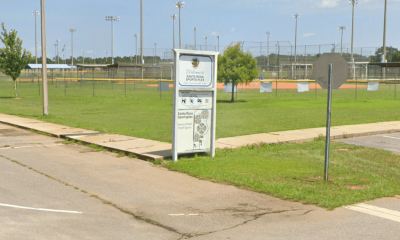
 Rec Sports1 week ago
Rec Sports1 week agoDeputies investigating incident that caused panic at Pace youth sports complex
-

 High School Sports2 weeks ago
High School Sports2 weeks agoAppling County football to forfeit all 10 wins from 2024
-
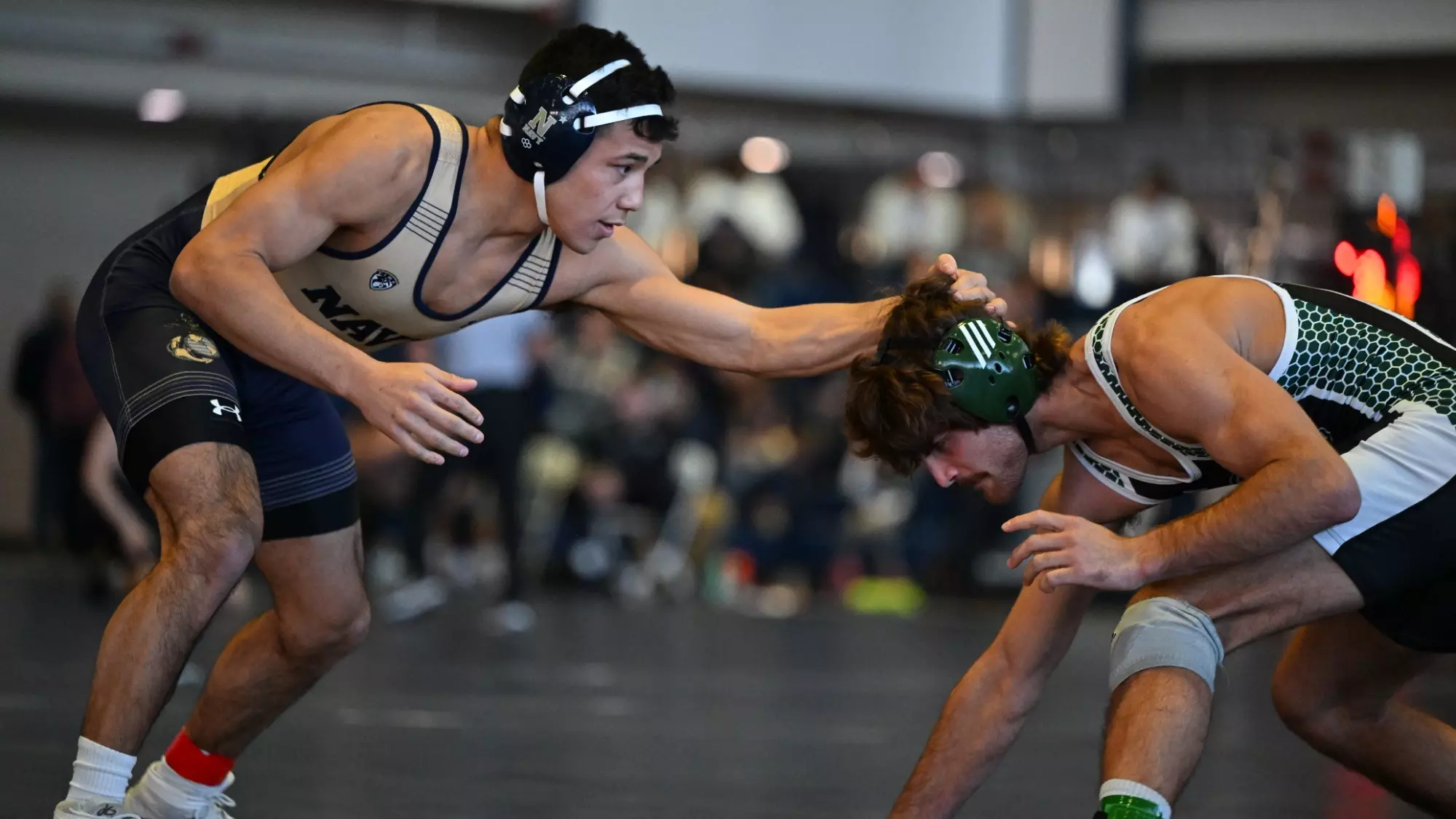
 College Sports2 weeks ago
College Sports2 weeks agoLehigh wrestlers prepare for wrestling U.S. Open
-
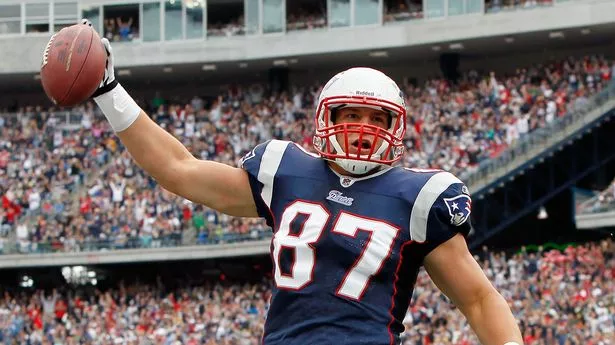
 NIL3 weeks ago
NIL3 weeks agoPatriots Legend Rob Gronkowski Makes Surprising Career Move
-

 NIL1 week ago
NIL1 week agoSave Like a Pro: NIL money isn’t free cash—taxes take a bite! Set aside part of …
-
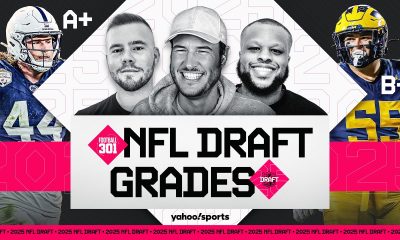
 Sports2 weeks ago
Sports2 weeks agoHow to watch Yahoo Sports' NFL Draft Live show
-

 Fashion2 weeks ago
Fashion2 weeks agoWatch Saudi Arabian GP free live stream
-
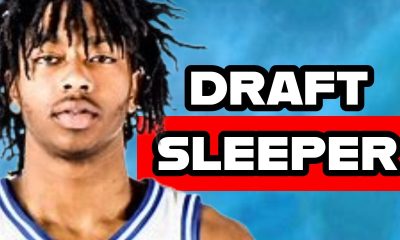
 College Sports6 days ago
College Sports6 days agoDuke basketball's Isaiah Evans on 2025 NBA Draft early entry list
-
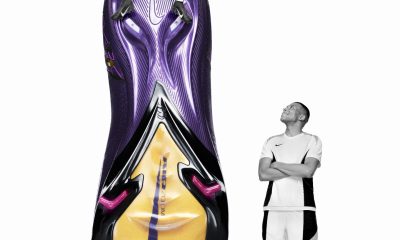
 Fashion1 week ago
Fashion1 week agohas always dreamed in Mercurial. Now his initials are on the boots. The new Kyl…

















